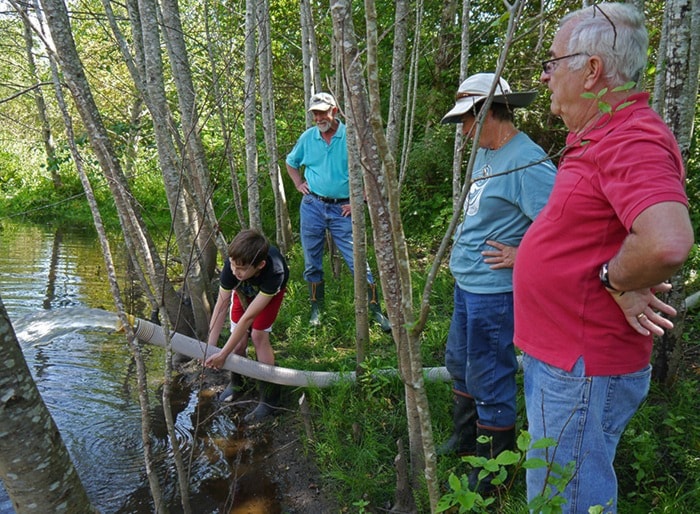The sunny warm weather of the past few weeks has been greatly appreciated by most people, encouraging them to participate in outdoor activities such as gardening, hiking, playing sports and swimming.
However, if you were a juvenile salmon living in a small stream, you might have a different opinion of the weather.
Summer and early fall months are typically a time of great stress to stream-dwelling fish with life-threatening changes to the environment occurring. The warm weather reduces water levels, often creating a series of unconnected pools or, in some streams, causing them to dry up completely.
As water levels decrease, temperatures rise and oxygen levels decline, sometimes to lethal levels. At the same time, the surviving fish congregate in the remaining pools where they are more susceptible to predation by racoons and other fish-loving creatures.
Mortality associated with the stream conditions at this time of the year is one of the main factors limiting production of coho.
Piercy Creek, which flows through Courtenay, has a long history of drying up in summer, resulting in juvenile coho becoming stranded in isolated pools.
This year, the warm weather has once again caused water levels to drop rapidly, creating many unconnected pools where coho have little chance of surviving unless there is a sudden change to a prolonged rainy period, which seems unlikely.
To improve the survival chances of some stranded coho, volunteers of the Millard-Piercy Watershed Stewards with the support of DFO community adviser Dave Davies undertook a "rescue" operation during two days involving the capture and transfer of coho fry from several pools in Piercy Creek to a more favourable site in Millard Creek.
Piercy Creek is the main tributary of Millard, which has a year-round water flow.
The fry were captured with pole seines, put into a tank of well-oxygenated water then driven to the release site, a beaver-pond on Millard Creek.
An estimated 1,000 fry were transferred from a site near Cousins Road the first day while about 2,000 were moved on the second day from a section of the creek adjacent to Piercy Creek Estates.
The fry will remain in the Millard-Piercy system until next spring when survivors will migrate to the estuary as smolts to begin the next phase of their life cycle.
The Millard-Piercy Watershed Stewards have been working to improve the health of the Millard-Piercy watershed for many years. Projects undertaken include water quality monitoring, smolt counting in spring, operation of a small hatchery, habitat improvement, planting stream-side vegetation and working with local governments to minimize impacts of development.
For more information on MPWS, go to our website http://millardpiercy.org.
— Millard-Piercy Watershed Stewards
